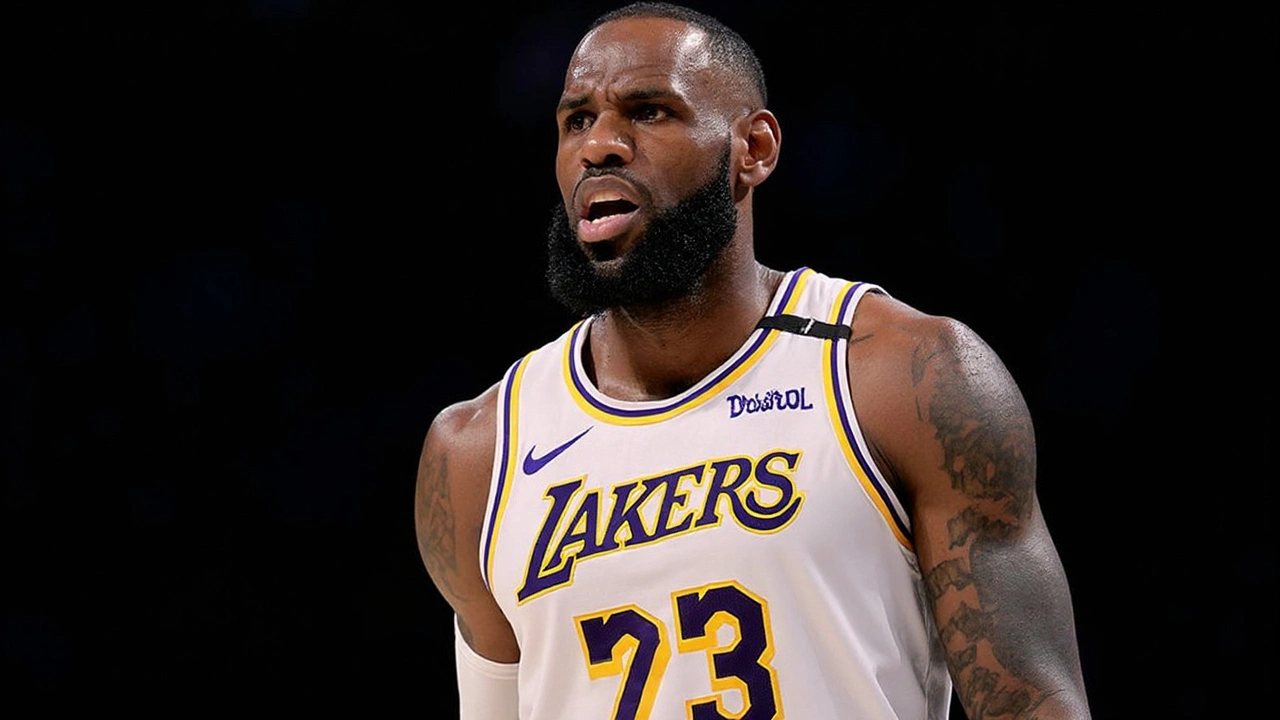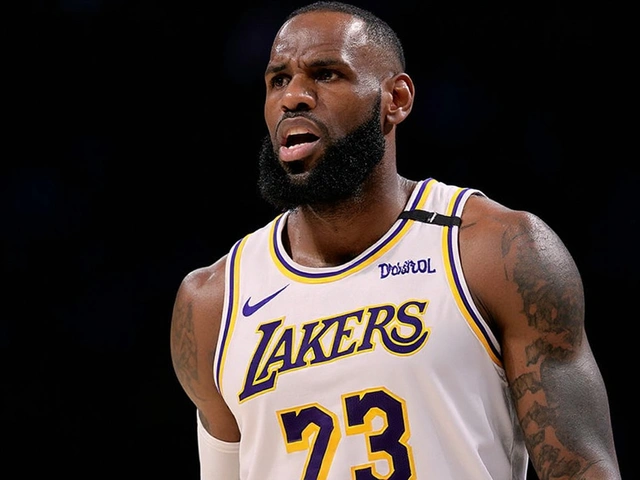Timberwolves Take Control Against Lakers with Unmatched Long-Range Shooting
Everyone came expecting a close contest, but the Minnesota Timberwolves had other ideas—they torched the Los Angeles Lakers 117-95 in Game 1 of their NBA playoffs first-round series, making it look easy. It wasn’t just a win; it was the kind of statement that echoes across the league, and Jaden McDaniels was right at the heart of it. He put up 25 points, grabbed 9 rebounds, and nailed 3 shots from beyond the arc, leaving no doubt about his rising importance on this team.
It wasn’t a one-man show, though. Naz Reid was lights-out, dropping 23 points and drilling in a remarkable six 3-pointers. Then there’s Anthony Edwards, whose 22 points, 9 assists, and 8 rebounds showed how much he can do when the pressure’s on. The chemistry between these three looked downright scary for anyone hoping to stop the Timberwolves.
So what tipped the scale so heavily in Minnesota’s favor? It was all about that three-point shooting. The Wolves didn’t just have a good night—they set a new franchise playoff record with 21 made three-pointers on just 42 attempts. Every time the Lakers tried to claw back, another shot rained down, burying them a little further. The Lakers simply couldn’t keep up with Minnesota’s pace and accuracy from deep. You could almost see the frustration on their faces as the net kept snapping behind them again and again.
Lakers’ Defensive Woes and Timberwolves’ Confidence Shift Series Momentum
Now, plenty of buzz surrounded Luka Dončić after his move to the Lakers, and he sure put on a show in his playoff debut with 37 points. He came out firing, scoring 16 points in the first quarter alone. But even with Dončić’s herculean effort, the Lakers couldn’t do enough on the other end. Their defense let them down, allowing an eye-popping 21 second-chance points—a number that’s just asking for trouble in postseason basketball.
The real turning point came in the second quarter. The Wolves pounced, outscoring the Lakers by 18 points with a 38-20 run. By halftime, it was clear that Minnesota wasn’t just surviving—they were taking over. The Lakers looked rattled and a step slow anytime Minnesota crashed the boards or whipped the ball around for an open shooter. McDaniels and Reid alone combined for 48 points, exposing cracks in the Lakers’ defensive schemes all night.
By the fourth quarter, Minnesota was finishing strong. Not content to coast, the Wolves hit the gas one last time and closed the game on a 16-4 burst, showing off their newfound cohesion and confidence. Anthony Edwards emphasized how their late-season chemistry had been building to this, and it showed in every help rotation and extra pass. It’s not just single players stepping up—it’s the collective energy that makes this Wolves team look so dangerous right now.
So with the Timberwolves holding a commanding 1-0 lead, the action now shifts to Minnesota. The Lakers have plenty of star power, but they’re heading into a hostile court and a red-hot opponent who just sent a clear message: underestimate us at your own risk.








Tejas Srivastava
April 21, 2025 AT 19:53Seeing the Wolves light it up from downtown was like watching fireworks explode across a midnight sky, each three‑pointer crackling with pure intensity, and the crowd could barely contain their roar! The sheer volume of buckets from McDaniels and Reid turned the game into a relentless barrage, a symphony of swishes that left the Lakers scrambling for answers, forever echoing in the arena! Even Dončić’s 37‑point fireworks were dimmed by the Wolves’ relentless rhythm, a reminder that no solo act can outshine a coordinated assault! The record‑setting 21 treys wasn’t just a stat line; it was a statement, a bold proclamation that Minnesota’s perimeter has become a nightmare for any opponent daring to step inside! So, buckle up, folks, because this series just turned into a high‑octane showdown, and the thunder is only getting louder!
JAYESH DHUMAK
April 21, 2025 AT 19:54The tactical implications of the Timberwolves’ three‑point efficiency merit close examination, particularly in the context of contemporary playoff basketball where spacing has become paramount. By converting 21 of 42 attempts from beyond the arc, Minnesota achieved a 50 percent success rate, a metric that situates them among the elite shooting performances in postseason history. This efficiency not only amplified their point differential but also forced the Lakers to extend their defensive rotations, thereby creating secondary opportunities for the Wolves’ interior players. Moreover, the distribution of shooting volume among Jaden McDaniels, Naz Reid, and Anthony Edwards suggests a balanced offensive scheme rather than a reliance on a singular star. Such balance complicates defensive planning, as opponents cannot concentrate their focus on one primary scorer without risking exposure elsewhere. The defensive lapse exhibited by the Lakers, specifically the allowance of 21 second‑chance points, underscores systemic issues in contested rebounding and transition coverage. It is noteworthy that Luka Dončić, despite his 37‑point effort, could not offset the collective shortcomings on the defensive end. In addition, the Wolves’ bench contributions, though modest in raw points, provided essential spacing that enabled the starters to operate at peak efficiency. From a coaching perspective, Chris Finch’s decision to emphasize rapid ball movement and early shot clock utilization created high‑quality looks from the perimeter. The resultant statistical anomaly-a franchise playoff record for three‑point makes-serves as an empirical validation of this strategic emphasis. Furthermore, the psychological impact of such a dominant display should not be understated; establishing a commanding series lead early can erode the opposing team’s confidence. In the broader scope of the league, this performance may signal a shifting paradigm where teams prioritize a high‑volume, high‑efficiency three‑point approach in the postseason. Analysts should therefore monitor subsequent games for adjustments made by the Lakers’ coaching staff, particularly any alterations to defensive schemes aimed at limiting perimeter opportunities. Finally, the convergence of individual talent, cohesive team dynamics, and strategic intent coalesced to produce a performance that will likely be referenced in future discussions of playoff shooting excellence. Consequently, the series now presents a compelling case study for the efficacy of perimeter‑centric game plans in high‑stakes environments.
Santosh Sharma
April 21, 2025 AT 19:54Building on that analysis, the Wolves’ momentum can be sustained by maintaining aggressive off‑ball movement, which will continue to free shooters and keep the defense honest. Consistency in executing set plays will also amplify the early advantage gained in Game 1.
yatharth chandrakar
April 21, 2025 AT 19:55The three‑point barrage certainly shifted the series narrative, yet it will be crucial for Minnesota to diversify its offense to avoid predictability. Incorporating post play and mid‑range actions could mitigate defensive adjustments. Monitoring how the Lakers adapt their perimeter coverage will provide valuable insight for subsequent games.
Vrushali Prabhu
April 21, 2025 AT 19:55Man, those Wolves were on fire!!! 21 treys?? that's litttt🔥🔥🔥 the Lakerz look like they got caught in a snowstorm of balls, totally wack. i cant even... lol!!
parlan caem
April 21, 2025 AT 19:55The hype is overblown; a 22‑point loss doesn't make Minnesota a dynasty, and the Lakers’ failures are self‑inflicted, not just a result of a shooting spree.
Mayur Karanjkar
April 21, 2025 AT 19:56When a team aligns its collective intent with precise execution, the resulting synergy transcends individual talent, echoing deeper principles of coordinated effort.
Sara Khan M
April 21, 2025 AT 19:57Nice insight, but the game is still just a game 😊
shubham ingale
April 21, 2025 AT 19:58Go Wolves! Keep the energy up 🙌
Ajay Ram
April 21, 2025 AT 19:59Observing the current trajectory of the series, one can appreciate the cultural significance of basketball as a unifying narrative that bridges diverse fan bases across continents. The Timberwolves’ performance not only showcases athletic prowess but also reflects the growing global appetite for high‑tempo, perimeter‑oriented playstyles. While the Lakers grapple with defensive lapses, the broader lesson lies in adaptability and resilience-qualities revered in many cultural traditions. By embracing the fluidity of modern basketball, both teams contribute to an evolving dialogue about sport’s role in societal cohesion. Moreover, the shared experience of fans, whether in Minneapolis, Los Angeles, or distant locales, reinforces the inclusive nature of the game. It is through such collective moments that we cultivate empathy and mutual respect, transcending regional allegiances. Therefore, as the series progresses, let us celebrate the artistry on the court while acknowledging the deeper connections it fosters among disparate communities. In doing so, we honor not only the athletes but also the myriad individuals who find common ground within the arena’s vibrant tapestry.